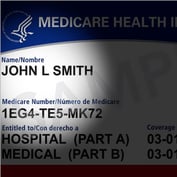$1 Trillion Potential Seen For Self-Directed Health Plans
By
A new study predicts that if defined-contribution health care plans grow as expected, up to $1 trillion a year in funds could flow into individually held health care accounts by the end of the decade, presenting a potential bounty for financial planners and investment advisors.
Fast-growing health benefits costs, the rise of health care consumerism and improvements in e-commerce will increase the number of employers considering defined-contribution models, Booz Allen & Hamilton, the McLean, Va., consulting firm, predicts.
Defined-contribution health plans, also known as self-directed plans, are similar to 401(k) retirement plans in that they establish accounts that are managed by the consumer. Employees are given a specific amount of pretax employer dollars each year, then shop online from a choice of health care plans offering a range of prices and benefits.
Several major employers, including Medtronic and Motorola, already offer defined-contribution plans as a health benefit option, although sometimes just to managers, Booz Allen notes.
Cost savings from managed care appear to have run their course, leaving defined-contribution plans to emerge as the next stage in health care benefits, the firm says.
From 50 million to 100 million self-directed health care accounts could be created over the next 10 years, Booz Allen estimates. Based on Health Care Financing Administration figures, Booz Allen calculates that the annual privately paid portion of the nations health care total could be more than $1 trillion a year by that time.
Shifting that kind of money from corporate checking accounts and institutional insurance pools to individual accounts would represent a tidal wave of change, the consulting firm says.
The sheer volume of the funds in these accounts would provide an unusual opportunity for U.S. financial services providers to help consumers manage their benefit dollars for maximum value and security. Health care accounts could be viewed as akin to investment portfolios.
“Those funds could potentially be invested in interest-earning accounts,” observes Gary Ahlquist, a senior vice president and managing partner of Booz Allens insurance group in Chicago.
Such a scenario could ultimately forge a union of health care benefits and traditional banking-investment services.
And that could be just the beginning of big changes in employee benefits.








 September 09, 2001 at 08:00 PM
September 09, 2001 at 08:00 PM










